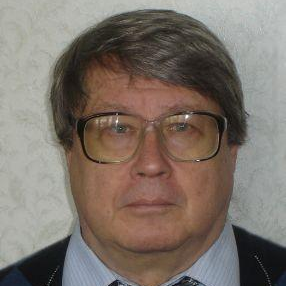Metal Complex Catalysis
A special issue of Catalysts (ISSN 2073-4344).
Deadline for manuscript submissions: closed (31 July 2020) | Viewed by 6315
Special Issue Editors
Interests: metal complex catalysis; biomimetic catalysis; photocatalysis; oxidation of hydrocarbons; catalytic activation and functionalization of C–H bonds in hydrocarbons; organometallic chemistry; regioselectivity
Special Issues, Collections and Topics in MDPI journals
Interests: chemistry and catalytic applications (including C–H activation processes) of transition metal pi-complexes; sandwich compounds; triple-decker complexes; metallacarboranes and transition metal clusters; application of boron compounds for catalyst design in homogeneous catalysis
Special Issue Information
Dear Colleagues,
This Special Issue is devoted to all aspects of metal complex catalysis, including synthesis of catalysts and their application in organic synthesis; efficient and selective functionalization of C–H bonds in saturated and aromatic hydrocarbons, including C–H activation processes under chelation assistance by directing groups; oxidation of hydrocarbons; transformations of smool molecules (CH4, C2H6, N2, H2O, H2O2, CO, CO2, etc.); cycloaddition reactions; regioselective and enantioselective homogeneous catalysis; and metal complex catalyzed polymerization, fine organic synthesis, and hydrogen storage systems. Articles on the study of reaction mechanisms will also be welcome.
It is a pleasure to invite you to submit a manuscript to this Special Issue; regular articles, communications, as well as reviews are all welcome.
Prof. Dr. Georgiy B. Shul'pin
Prof. Dr. Dmitry A. Loginov
Guest Editors
Manuscript Submission Information
Manuscripts should be submitted online at www.mdpi.com by registering and logging in to this website. Once you are registered, click here to go to the submission form. Manuscripts can be submitted until the deadline. All submissions that pass pre-check are peer-reviewed. Accepted papers will be published continuously in the journal (as soon as accepted) and will be listed together on the special issue website. Research articles, review articles as well as short communications are invited. For planned papers, a title and short abstract (about 100 words) can be sent to the Editorial Office for announcement on this website.
Submitted manuscripts should not have been published previously, nor be under consideration for publication elsewhere (except conference proceedings papers). All manuscripts are thoroughly refereed through a single-blind peer-review process. A guide for authors and other relevant information for submission of manuscripts is available on the Instructions for Authors page. Catalysts is an international peer-reviewed open access monthly journal published by MDPI.
Please visit the Instructions for Authors page before submitting a manuscript. The Article Processing Charge (APC) for publication in this open access journal is 2700 CHF (Swiss Francs). Submitted papers should be well formatted and use good English. Authors may use MDPI's English editing service prior to publication or during author revisions.
Keywords
- Homogeneous catalysis
- Metal complex catalysis
- Enantioselective catalysis
- C‒H functionalization
- C‒H activation
- Oxidation of hydrocarbons
- Reaction mechanisms






